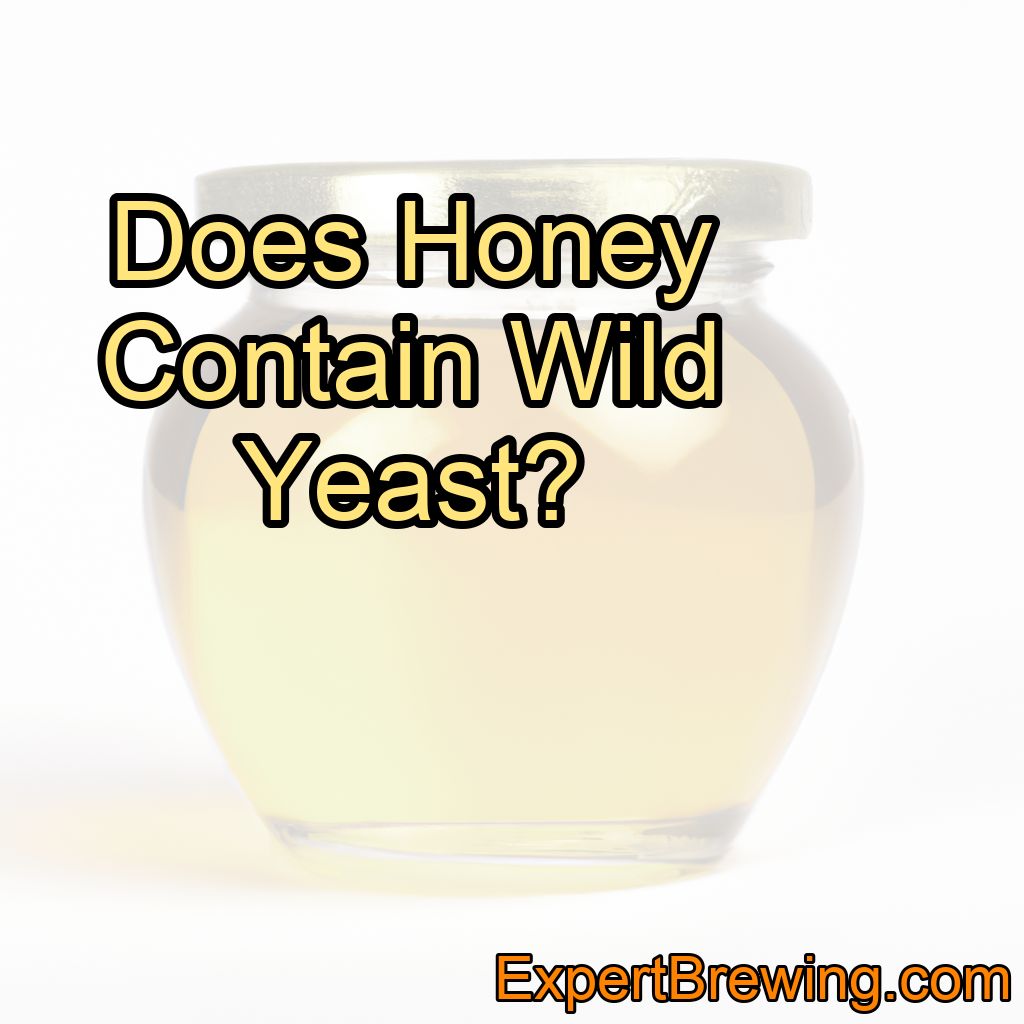In my years as a brewer, I’ve been asked a myriad of questions about the ingredients I use. One question that keeps popping up is, “Does honey contain wild yeast?“
In many cases, yes, honey does contain wild yeast. But there’s a little more to it than that.
While it’s true that honey naturally contains yeast, the yeast isn’t always viable or capable of fermenting.
In this blog post, I’ll delve deeper into the relationship between honey and yeast, from the science behind it to its implications for brewing.
The Science of Honey and Yeast: A Sweet and Complex Relationship
When you think of honey, you probably imagine a sweet, golden liquid made by bees. And while that’s true, there’s a lot more going on beneath the surface.

Bees collect nectar from flowers, which naturally contains wild yeast. However, the bees’ process of turning nectar into honey involves reducing the water content, which in turn creates an environment that’s inhospitable to yeast and other microbes.
The low water content, high sugar content, and acidic nature of honey all work together to inhibit the growth of yeast, meaning that while honey does contain yeast, it’s often not in a form that’s ready to ferment right out of the jar.
The Role of Bees
It’s worth noting that bees play an essential role in this process. They’re not just responsible for transforming nectar into honey; they also introduce lactic acid bacteria into the mix, which further helps to inhibit the growth of yeast and other potentially harmful organisms.

Honey in Brewing: A Sticky Situation
So, if honey contains yeast but isn’t naturally fermentable, what does that mean for brewers? Well, it’s a bit of a sticky situation.
Because the yeast in honey is often inactive, using raw honey as the sole source of yeast in a brew is somewhat unreliable. It can lead to inconsistent results, with some batches fermenting well and others not fermenting at all.
However, that doesn’t mean honey is off the table as a brewing ingredient. On the contrary, it can add a lovely sweetness and complexity to a brew, and when used in conjunction with a reliable source of yeast, it can contribute to a unique and delicious final product – also known as mead!
Honey Beers and Meads: A Sweet Symphony
Mead, a type of alcohol made by fermenting honey with water, is a perfect example of how honey can be used in brewing. In this case, brewers often rely on added yeast to kickstart the fermentation process, allowing the natural flavors of the honey to shine through in the finished product.

Similarly, honey beers, or brews that incorporate honey as an additional ingredient, can benefit from the distinctive flavor profile that honey provides.
How do you extract yeast from honey?
If I were to extract yeast from honey, I would follow these steps:
1. Prepare a sterile environment: Ensure that all equipment and surfaces are clean and sterilized to prevent contamination.
2. Dilute the honey: Mix the honey with sterile water in a ratio of 1:1 or 1:2. This helps to reduce the sugar concentration and make it easier to isolate the yeast.
3. Incubate the mixture: Place the diluted honey in a sterile container and cover it with a breathable material like cheesecloth. Keep it in a warm and dark place, around 20-30°C (68-86°F), for a few days. This allows the yeast naturally present in the honey to multiply.
4. Harvest the yeast: After a few days, you may notice a layer of foam or sediment on top of the mixture. This is likely yeast. Carefully remove it using a sterilized spoon or pipette and transfer it to a sterile container.
5. Store and propagate the yeast: Place the harvested yeast in a sterile container with a suitable growth medium, such as a yeast nutrient broth or a mixture of water and malt extract.
This allows the yeast to continue growing and multiplying. Store the container in a cool place, like a refrigerator.

Remember, this method relies on the natural yeast present in honey, which may vary in quantity and quality. If you require a specific yeast strain for brewing or other purposes, it is recommended to use commercially available yeast strains instead.
The Art of Honey Fermentation: It’s All About Control
If you’re a home brewer interested in experimenting with honey, it’s all about control. You need to control the yeast, control the fermentation process, and control the flavors you’re introducing into your brew.
Rehydrating the yeast in honey before adding it to the brew is one technique that can help to kickstart the fermentation process.
This involves mixing honey with a small amount of warm water, then adding a yeast nutrient and allowing the mixture to sit until it begins to ferment.
This process can help to reactivate the yeast in the honey, making it a viable source of fermentation for your brew.
The Bottom Line: Honey and Yeast
In conclusion, honey does contain wild yeast, but it’s not always in a form that’s readily fermentable. However, with a bit of know-how and some careful control, honey can be a wonderful ingredient to experiment with in brewing.
Here, then, are some key facts to remember:
1. Honey does contain wild yeast, but it’s often inactive due to the low water content and high sugar content of honey.
2. Bees introduce lactic acid bacteria into honey, which further inhibits the growth of yeast.
3. Using raw honey as the sole source of yeast in a brew can lead to inconsistent results.
4. However, honey can add a lovely sweetness and complexity to a brew when used in conjunction with a reliable source of yeast.
5. Mead, a type of alcohol made by fermenting honey with water, showcases how honey can be used in brewing.
6. Rehydrating the yeast in honey can help to reactivate it, making it a viable source of fermentation.
7. The key to successful brewing with honey is control—over the yeast, the fermentation process, and the flavors.
8. Despite the challenges, honey is a wonderful ingredient to experiment with in brewing.
9. The unique flavor profile of honey can contribute to a distinctive and delicious final product.
10. As always, experimentation and learning are at the heart of great brewing.
FAQs
Which fruits have wild yeast?
Some fruits that commonly have wild yeast present on their skins include grapes, apples, pears, and plums. The yeast can contribute to natural fermentation processes, such as in winemaking or cider production.
What is the most common wild yeast?
The most common wild yeast found in various environments, such as fruits, flowers, and soil, is Saccharomyces cerevisiae.
How did Vikings get yeast?
The Vikings obtained yeast through various means. They likely acquired wild yeast naturally present in the environment, such as on fruit skins or in the air. They may have also collected yeast from previous batches of fermented foods or beverages. Additionally, trading with other cultures provided opportunities to obtain different strains of yeast.
What are the sources of wild yeast?
The sources of wild yeast can be found in various environments such as the air, soil, fruits, flowers, and even on the surface of grains. These natural habitats contain a diverse range of yeast species that can be harnessed for fermentation purposes.
Where is wild yeast found?
Wild yeast can be found in various environments such as the air, soil, and on the surface of fruits, vegetables, and grains. It is naturally present in many ecosystems and can be collected and used for various fermentation processes, such as bread-making and brewing.





